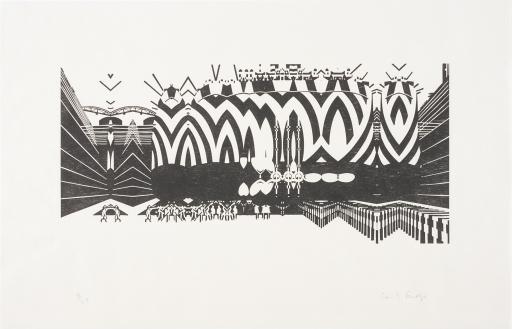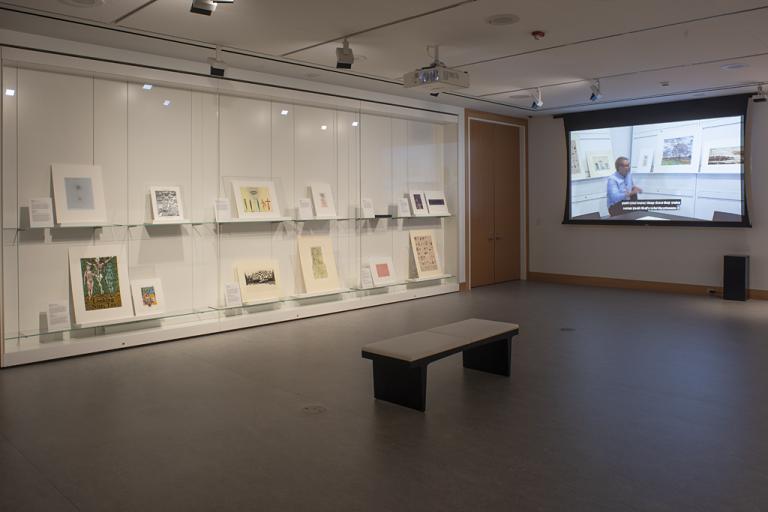untitled (landscape), Carl Fudge
Artwork Overview
Carl Fudge, artist
born 1962
untitled (landscape),
2008
Where object was made: Lawrence, Kansas, United States
Material/technique: laser-etched woodcut
Dimensions:
Image Dimensions Height/Width (Height x Width): 205 x 445 mm
Image Dimensions Height/Width (Height x Width): 8 1/16 x 17 1/2 in
Sheet/Paper Dimensions (Height x Width): 375 x 585 mm
Sheet/Paper Dimensions (Height x Width): 14 3/4 x 23 1/16 in
Mat Dimensions (Height x Width): 20 x 25 in
Image Dimensions Height/Width (Height x Width): 205 x 445 mm
Image Dimensions Height/Width (Height x Width): 8 1/16 x 17 1/2 in
Sheet/Paper Dimensions (Height x Width): 375 x 585 mm
Sheet/Paper Dimensions (Height x Width): 14 3/4 x 23 1/16 in
Mat Dimensions (Height x Width): 20 x 25 in
Credit line: Gift of the KU Department of Visual Art, Printmaking Area
Accession number: 2010.0115
Not on display
If you wish to reproduce this image, please submit an image request


